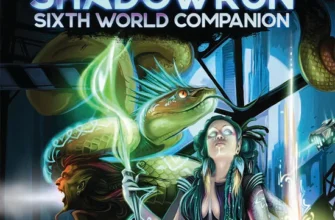The elements that captivate us in digital realms are often overlooked. Yet, they hold the power to transform mere pixels into vibrant universes. The allure lies not just in the visuals but in the intricate web of narratives. It’s about building histories that resonate, events that intrigue, and figures who feel utterly real.
Storytelling in interactive media is a delicate craft. It involves blending imagination with structure. There’s a unique charm in scripting tales that consistently engage players. Each narrative thread should feel purposeful. Every persona must have depth. When done right, audiences feel a connection. They crave more of the world you have crafted, becoming invested in its journey and outcomes. Such storytelling draws individuals into an endless loop of curiosity and wonder.
Let’s dive into the process of breathing life into these settings. Think of the backdrop you’re developing. It should be as compelling as a storybook, as relatable as a legend shared across generations. Consider the dialogues, forging discussions that inspire thought and conversation. Through every twist and revelation, the virtual world becomes a tapestry, woven with threads of excitement and mystery, maintaining a balance between unpredictability and logical progression. Creating personas, meanwhile, involves an art in itself, drawing from a well of creativity, empathy, and cultural understanding to bring forth identities that resonate and evolve with time.
- Crafting Engaging Game Lore
- Understanding Game World Dynamics
- History and Context
- Cultural Influences and Societies
- Integrating Lore with Gameplay
- Storytelling Mechanics
- Interactive Worldbuilding Elements
- Developing Unique Game Characters
- Video:
- How to Build Compelling Characters
- FAQ:
- What are the key elements to consider when creating game lore that will engage players?
- How can I develop characters in my game that players will find memorable and relatable?
- What methods can I use to effectively introduce game lore without overwhelming the player?
- In what ways can game lore influence the design of game levels and environments?
- How can player choices impact the game lore and character development in a narrative-driven game?
Crafting Engaging Game Lore
Unveiling vibrant worlds involves more than just pretty visuals and catchy mechanics. It requires a richness in narrative layers that draw players into a deeper connection with the universe they’ve stepped into. A well-crafted storyline is the secret ingredient to hold their attention and make the adventure memorable. Therefore, investing time and creativity in narrative development can lead to unexpected player engagement and community growth.
To dive into the process of shaping narrative worlds:
- Define the core essence. What is the heart of your narrative? It should be clear and compelling to spark curiosity.
- Embrace diversity in storytelling. Use cultural influences and different perspectives to add depth and authenticity.
- Consistency is key. Keep details coherent throughout to bolster credibility.
- Integrate surprises. Unexpected plot twists can keep players on their toes and eager for the next revelation.
Once the structural foundation is laid, it’s time to weave intricate details:
Detailed backstory breathes life into any mythical universe. Craft complex histories, alliances, and conflicts. Let these backstories be subtly revealed through in-game dialogue, collectibles, and environmental cues. This approach not only embeds players into the fabric of your narrative but also gives them a sense of being explorers and detectives. Delving deeper into the story through personal discoveries creates a unique attachment to the story.
- Invent legendary figures. Heroes, villains, and mysterious entities enrich storytelling.
- Plot epic events. Wars, cataclysms, and festivals can serve as pivotal moments.
- Design distinctive cultures. Different factions or races should have unique customs and values.
The ultimate aim? To ensure that each narrative thread and character feels indispensable. That the world itself is a living entity, breathing with drama and potential, ready to enrapture any who dare to delve into its depths. Building such intricate and resonant universes is not just rewarding but is a testament to the limitless potential of human imagination.
Understanding Game World Dynamics
In order to grasp the essence of digital realms, one must first delve into their intricate structures. Every virtual universe thrives on its unique set of principles. These rules dictate how elements interact, evolve, and sometimes collide. Players notice when these fundamentals lack cohesion. They lose interest if the environment feels disjointed. It’s crucial to weave a seamless tapestry where every factor plays its part, ensuring narrative and engagement align smoothly. The challenge is in balancing creativity with coherence, allowing users to dive into a universe that feels both vast and unified.
Every element serves a purpose.The terrains, societies, and hidden mysteries all contribute to a cohesive entity. Without a strong foundational framework, the entire construct risks crumbling. Consider the interactions between various entities–a delicate dance of influence and reaction. Societies might rise or fall based on environmental changes. These interactions should feel logical yet surprising, grounded yet imaginative. Crafting this is no small feat, requiring deep reflection and understanding of causalities and interdependencies.
Interactivity is pivotal.The world shouldn’t just be a backdrop, but a living participant. It should react, adapt, and occasionally challenge expectations. Weather changes might affect travel routes or reveal new locations. Political shifts could open or close off trade, affecting resource availability. Such dynamics provide depth and unpredictability. They invite engagement, allowing for discovery and strategy. Every mechanic should reinforce this living experience, ensuring that the space feels reactive and alive.
An effective universe doesn’t rely solely on its setting. Relationships between inhabitants, the conflicts they endure, and their affiliations to various factions all add layers of intrigue. Power struggles might shift alliances and alter major events. These relational dynamics not only enrich the story but also provide hooks for deeper exploration. The key is to weave them intricately, offering a seamless experience where each interaction and decision influences the world at large. It’s this interplay that keeps players returning, eager to explore more of the evolving tapestry.
History and Context

The roots of a virtual universe often define its essence. This foundation holds the keys to its depth. Unique settings emerge from rich backgrounds. They captivate those who venture into their worlds. With time, these stories grow. Just as a tapestry weaves together multiple threads, a captivating storyline is born from intricate histories and varied backgrounds, drawing the player into realms where they feel a part of something greater.
Origins give meaning to the virtual beings within these terrains. Why do they battle? Where did their traditions arise? These questions add layers of intrigue. Through thoughtful exploration of past events, the audience can unravel motivations. They discover why valleys echo with ancient tales. Empires rise and fall with purpose. Each triumph or tragedy leaves its mark. To fully appreciate the depth of a fictional setting, one must delve into the eras that shaped it, thereby unveiling stories that reverberate with genuine emotion.
Imaginative worlds also offer reflections of our own. They mirror real conflicts and triumphs. Analogies with our past can deepen engagement. Through fictional chronicles, wisdom is imparted. Empathy grows when struggles are universally recognizable. Champions mirror those in our histories. Rivalries mimic age-old feuds we’ve known. Thus, the past is not merely a backdrop but a living component, encouraging introspection and connection.
Cultural Influences and Societies

In storytelling, cultural influences provide depth to virtual worlds. They shape societies that feel authentic. Diverse backgrounds introduce unique elements. It’s like a tapestry, rich and varied. Dive into histories, beliefs, traditions. This enriches narratives, adding layers of meaning. Characters don’t exist in a vacuum; their society molds them.
Understanding the intricacies can transform narratives. Consider what drives a community. Economy, geography, spiritual beliefs–each aspect matters. Think about social structures too. Hierarchical or egalitarian? This shapes interactions. People relate to what feels real.
Let’s explore some elements:
- Mythology: Reflects deeper truths and fears.
- Language: Vocabulary affected by environment and history.
- Traditions: Customs passed down over generations.
- Art: Shows expression of cultural identity and values.
All these create context, offering authenticity. They invite engagement. When audiences see familiar elements, they connect. It’s about resonance. Weaving elements thoughtfully invites curiosity, prompting exploration.
Consider how geography influences culture. Isolated regions develop differently. Resources impact lifestyles and achievements. Abundance or scarcity drives innovation. Rituals tied to the land underline spiritual connections and power dynamics.
Political and social aspects vary too. Monarchies versus democracies offer contrasting themes. Power struggles convey societal values. Social classes determine access to resources. Protagonists confront these challenges, adding tension. Society reflects complexity, not simplicity. It’s not just the physical world but the ideological one that shapes individuals.
Through this lens, worlds and protagonists start to breathe. The tapestry becomes intricate, vivid. It’s more than decoration, it’s foundational. Remember, authenticity lies in the details, and every nuance counts.
Integrating Lore with Gameplay
Incorporating the backstory directly into interactive experiences can deeply enrich a player’s journey. It transforms pixels and code into living, breathing worlds. When executed well, it captures attention. Players become invested, eager to explore more. Successful integration blurs the lines – mechanics and backstory unite seamlessly. This union means every action, every choice, feels meaningful within the world’s context. Imagine a player undertaking a quest; each task they complete reveals more about the history of their surroundings, creating a tapestry of engagement woven from curiosity and discovery.
One method is to intertwine narratives with objectives. Perhaps those ancient runes scattered throughout the landscape are keys to lost histories, essential for progression. They invite players to delve deeper, not just to finish a level, but to understand. Another way is through character abilities that reflect their personal journeys. When these abilities evolve, they narrate an epic, showing growth intertwined with the storyline. Such mechanics can make stories unforgettable. No longer are they mere background noise, but influential forces driving player excitement and investment.
To demonstrate these ideas, consider the relationship between a player’s avatar and the in-game world. This connection can be visualized as a cyclical process where experiences feed into the narrative, and that story, in turn, shapes upcoming experiences. This dynamic fosters not only replayability but a profound sense of belonging. Let’s visualize this concept:
| Gameplay Element | Narrative Integration |
|---|---|
| Quest Mechanics | Reveal world history through mission objectives |
| Character Skills | Show personal growth and unlock narrative layers |
| Environment Design | Embed story elements in world architecture |
Designers should see every challenge as a story awaiting a teller. Each pathway, a narrative thread woven into the larger tale. By embedding stories deeply into every facet, from the mundane to the epic, the environment around the player feels narratively alive. It’s not just about creating complex stories but ensuring that every interaction reinforces the world’s depth and authenticity. Players should leave not just with memories of battles fought, but with tales of worlds experienced and stories lived.
Storytelling Mechanics

In storytelling, mechanics play a vital role in engaging an audience. They help form a narrative that is both immersive and interactive. These elements guide how the story is revealed to the audience. Different techniques can dramatically alter perception. Narrative can be linear, non-linear, or even branching. Each offers a unique experience. Transitioning between settings, characters, and events needs strategic pacing. This careful orchestration ensures a dynamic flow, sustaining attention and arousing curiosity while allowing the narrative to unfold naturally.
Let’s explore some core mechanisms. Dialogue is crucial. It can define relationships, reveal background, or drive conflict. Choices are another powerful tool. They empower the audience, adding layers of depth. Choices shape the narrative and outcome. Then there’s environment. Locations often narrate without words. Atmospheres that embed clues or backstories enrich the immersion. Pacing manages tension, mystery, or tranquility in a narrative arc. It keeps the audience guessing yet engaged. Rewards and consequences further enhance emotional investment. When these mechanisms harmonize, the narrative feels organic. Each piece contributes to a broader tapestry, weaving a tale that captivates heart and mind.
| Mechanic | Description |
|---|---|
| Dialogue | Defines character relationships and advances the plot through conversations. |
| Choices | Empowers the audience by allowing them to influence outcomes. |
| Environment | Uses settings and atmospheres to convey narrative without direct exposition. |
| Pacing | Controls the rhythm of the narrative, balancing tension and relief. |
| Rewards/Consequences | Engages participants emotionally by offering stakes and resolutions. |
Understanding and utilizing these mechanics enriches narratives, making them more than just stories. They become experiences. Experiences that resonate are often remembered. Craftsmanship in storytelling mechanics creates bonds. Bonds that are powerful and enduring.
Interactive Worldbuilding Elements
Worldbuilding is at the heart of any immersive experience. It’s about crafting an environment that feels alive. Players should sense the vibrancy in every corner. They need to feel like they’re truly part of it. That’s the magic. One way to do that is by incorporating interactive elements that respond to actions, choices, and even mistakes. Such elements breathe life into the virtual world, making it not just a backdrop, but a character in its own right.
Player-Driven Narrativesplay a crucial role. Decisions should shape outcomes in tangible ways. Imagine branching storylines that evolve based on simple choices. This keeps users constantly engaged, eager to see consequences unfold. It transforms the static into dynamic, turning every decision point into a narrative engine. Players are not just spectators; they’re architects of their own experience.
Environmental Feedbackis another key component. The world should react to the player’s presence. Weather patterns might shift due to certain actions. Fauna could migrate or behave differently in response to choices made. These subtle touches build a realm where cause and effect are palpable, giving life to an ecosystem that feels genuine and responsive.
ConsiderResponsive Non-Player Characters (NPCs). They’re not just background noise. Their interactions should vary profoundly based on previous encounters. NPCs can remember past dealings, altering their behavior and dialogue. This creates a nuanced interaction layer, where every conversation is fresh and potentially pivotal. Players should leave feeling like they’ve genuinely interacted with individuals rather than programmed scripts.
Lastly, think aboutDynamic World Events. These occurrences are things that change independently of the player. Seasonal festivals, surprise attacks, or unexpected natural disasters. Such events ensure the world feels larger than any single player. It pulsates with its own rhythm and life, offering constant surprises around every corner. This instills a feeling of wonder and unpredictability, essential to maintaining ongoing interest and engagement.
Developing Unique Game Characters
Crafting unforgettable persona can be an art of its own. These figures aren’t just pixels on a screen; they’re the soul of the adventure. They need depth, a backstory, quirks. Each must resonate. For a memorable protagonist or antagonist, striking that balance between relatability and novelty is key.
Identify key traitssuch as their motivations, weaknesses, and defining features. Is there a particular event that shaped them? Consider how relationships they form might change them. Whether the protagonist or sidekick, everyone must contribute something distinct and valuable to the overarching narrative. Behavioral details help enrich this virtual tapestry even further.
Visual uniquenesscounts as much as psychological depth. Think about attire, movements, gestures. Often, a bold or unusual style can make these concepts stand out. Pair aesthetic choices with the persona’s essence. When these aspects align perfectly, it forms a fusion that enhances player immersion dramatically, creating a cohesive and engaging character experience.
Dialogue should intrigue and reveal. It shouldn’t just move the plot. Words need to embody what these figures stand for. Authentic conversations can forge connections with the audience. Remember, players invest emotion in these interactions. A tweak in tone, an unexpected humor–these can be the keys to credibility and charm.
Video:
How to Build Compelling Characters
How to Build Compelling Characters by Dimension 20 457,717 views Streamed 4 years ago 20 minutes
FAQ:
What are the key elements to consider when creating game lore that will engage players?
Creating compelling game lore requires several key elements: coherence, depth, and connection. Firstly, the lore should be coherent, meaning the world, its history, and its rules should make sense within the context of the game. Secondly, depth is important to give players the sense that there is more to discover beneath the surface, which can be achieved through detailed backstories, cultures, and historical events. Finally, connection is crucial — lore should tie into the player’s actions and the main storyline, creating a seamless integration that enhances immersion. Bringing these elements together helps in crafting a world that feels alive and worth exploring.
How can I develop characters in my game that players will find memorable and relatable?
To develop memorable and relatable characters, start by defining your characters’ motivations, backgrounds, and arcs. Characters should have clear goals and desires that drive their actions, which helps players understand and empathize with them. Reflecting on their backgrounds adds depth and context to their behavior. Additionally, character arcs — showing how characters grow or change over time — can make them more dynamic and engaging. It’s also important to consider diversity and representation, ensuring a wide array of experiences and perspectives to appeal to different players. Lastly, integrating quirks, unique skills, or personal stories can make characters stand out in the minds of players.
What methods can I use to effectively introduce game lore without overwhelming the player?
Introducing game lore effectively without overwhelming the player can be achieved through gradual revelation and integration with gameplay. Start by embedding lore in the environment and through interactions, such as signage, NPC dialogues, or in-game books and artifacts. This allows players to discover lore organically. Use cutscenes sparingly, focusing on key moments to avoid information overload. Also, employ visual storytelling through environments and character design to convey lore implicitly. Providing optional lore exploration paths ensures that those interested can delve deeper, while others can focus on core gameplay. Balancing accessibility and depth helps maintain engagement without saturation.
In what ways can game lore influence the design of game levels and environments?
Game lore is instrumental in designing levels and environments as it provides context and purpose. A well-developed lore can guide the aesthetic and architectural style of the game’s settings, imbuing them with a sense of history and culture. Lore can also dictate the narrative-driven objectives and challenges players face within a level, ensuring they are meaningful and contextually relevant. Additionally, lore influences environmental storytelling, where elements like ruins, graffiti, or weather patterns convey the world’s story. By aligning level design with lore, developers create immersive environments that enhance storytelling while engaging players through exploration and discovery.
How can player choices impact the game lore and character development in a narrative-driven game?
In a narrative-driven game, allowing player choices to impact game lore and character development creates a more personalized and engaging experience. Player decisions can influence storyline branches, alter character relationships, and reveal different aspects of the world. For instance, choosing to align with certain factions might uncover unique lore elements while affecting how non-playable characters perceive and interact with the player. Additionally, player choices can lead to different character development outcomes, shaping protagonist or companion trajectories in diverse ways. This dynamic interactivity not only empowers players but also adds replay value as they explore alternative narratives and character outcomes.





